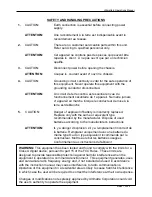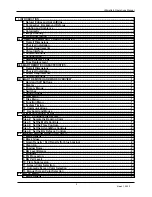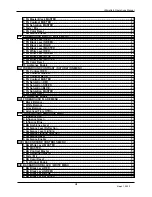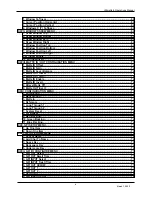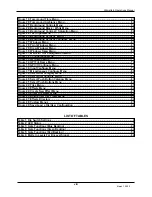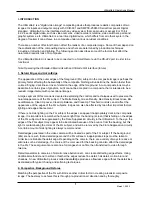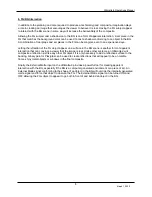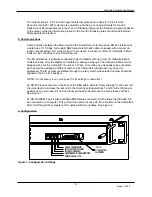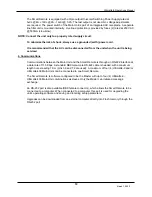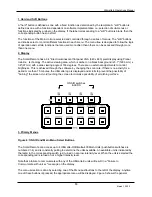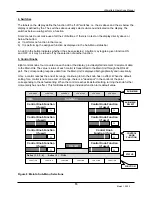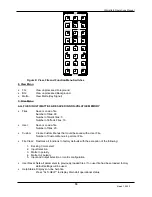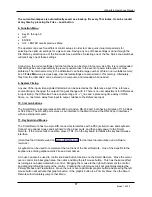
Ultimatte-9 Operations Manual
March 1, 2000
2
documenting and then matching each camera set up. Perspective is primarily a function of lens focal
length, camera height, camera tilt angle and camera-to-subject distance.
One of the new features introduced in the Ultimatte-9 is Background defocus. Normally as the FG camera
zooms in, the background should realistically and gradually go into a “soft” focus. When using pre-
rendered backgrounds, as the FG camera zooms in on the subject the background remains in focus
presenting an unrealistic composite image. With the Ultimatte-9, a gradual background defocus occurs
as the camera zooms in towards the subject and as it zooms out the background gradually returns to
focus.
With the Ultimatte-9, not only can the start and end points of defocus be specified but also the rate at
which defocus changes. There may be certain areas of the background that do not require defocusing.
Masking of the defocusing area can be done through the matte in signal.
3. Lighting and Ambiance
Matching the lighting of the FG and BG is equally important in creating a realistic composite image. Even
the most technically perfect blend of two images will look unreal if the lighting on the FG is totally at odds
with the lighting in the BG scene. The FG subject should be lit to match the look of the BG scene, but
without compromising the quality of the matte. FG Level, FG Black, and FG Contrast controls in the
Ultimatte-9 can help in blending the two images.
Another new feature added to the Ultimatte-9 is Ambiance. In the real world the colors of the background
will have some effect on the foreground. For example, if a person were to stand in front of a blue
background a certain amount of this background light would be "splashed" on the person creating a bluish
tint. When using pre-rendered backgrounds, this effect cannot be achieved using previously available
compositing techniques. The Ambiance feature in the Ultimatte-9 automatically analyzes the foreground
and the background to create a real image that "matches" the foreground with the background. In other
words, when this feature is enabled the foreground will automatically adjust to any background changes.
4. Colorimetry
A mismatch in colorimetry between the FG and BG can also undermine the realism of a composite image.
White balancing the camera or the telecine, for example, is an important step in shooting or transferring a
FG because of the effect it can have on the matte signal generation. The FG should not be further
colorized or painted with the camera or other color correction systems prior to compositing, as these
adjustments influence the integrity of the backing color and backing-to-subject transition edges. The FG
color controls of the Ultimatte-9 should be used instead. These controls do not interfere with the matte
generation process. With these FG color controls, it is possible to match the colorimetry of FG elements
to BG elements in the composite, even though these elements were shot under different conditions.
5. Image Stability
The relative stability of FG and BG images in a composite is also an important factor in achieving a
seamless blend of the two. Generally, image stability is a consideration when one or both elements are
originally photographed on film and transferred on a telecine. It is possible to create steady images on a
telecine transfer either by using a pin-registered gate in the telecine, or by using some form of electronic
registration.
Many forms of repeatable pan-tilt heads do not have the accuracy necessary to prevent any movement
discrepancies between FG and BG. Even if the start and stop positions are identical, slight differences in
the rate can cause the FG to appear to be sliding relative to the BG, and the illusion of the composite will
be destroyed.


